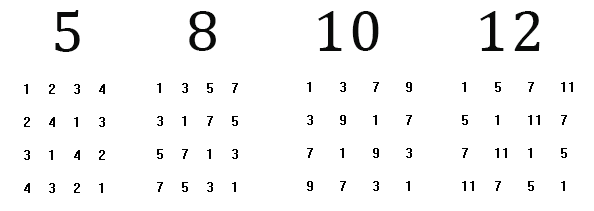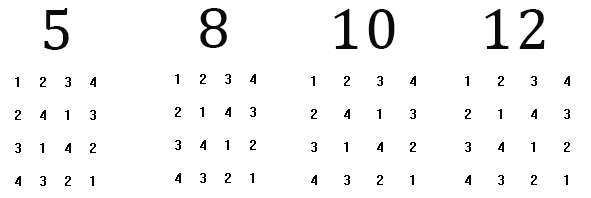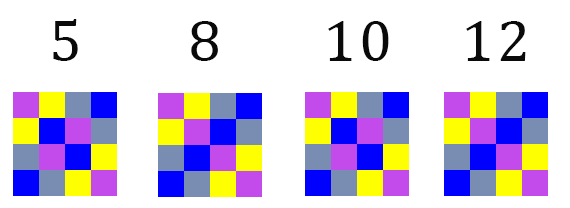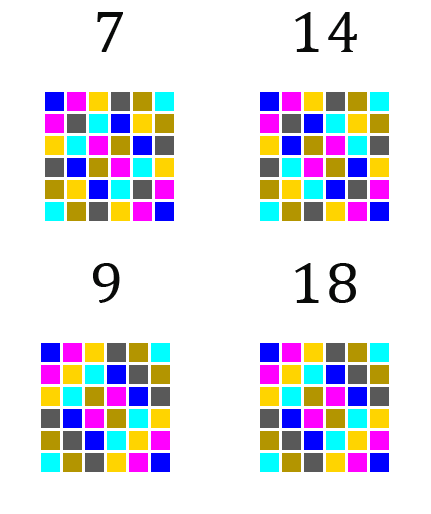If you start with the number 6 and organize the integers based on their remainder when divided by six, you have 6 sets. One set contains \(\{0, 6, 12, …, -6, -12, … \}\). Another set contains \(\{1, 7, 13, …, -5, -11, … \}\). A third \(\{2, 8, 14, …, -4, -10, … \}\). The last three are \(\{3, 9, 15, …, -3, -9, …\}\), \(\{4, 10, 16, …, -2, -8, … \}\) and \(\{5, 11, 17, …, -1, -7, -13 \}\).
If I use the lowest non-negative value in each set as its name, I can signify them by placing a bar over the number. The collection of 6 sets can be summarized as \(\{\overline{0}, \overline{1}, \overline{2}, \overline{3}, \overline{4}, \overline{5}\}\).
For the examples here, I’m going to reduce the list by throwing out all of the numbers that are not relatively prime to 6. Relatively prime means that they don’t have a common factor with 6. 2 is not relatively prime to 6 nor is 3 because they divide 6. Also 4 is not relatively prime because 2 divides both. I also discard 0 because all of the numbers in \(\overline{0}\) are have 6 as a common divisor. This leaves a much shorter list: \(\{\overline{1}, \overline{5}\}\)
What’s interesting about this reduced list is that, if you multiply any pair of its numbers, the product is still in the collection. \(1 \times 1 = 1\), \(1 \times 5 = 5\), \(5 \times 5 = 25\). If you simplify 25 modulo 6, you get 1, still within the reduced set.
In general, if you take an integer \(n\) and keep only the numbers that are relatively prime to \(n\), the result of any product is in one of the “residue classes” of the list. This means that a multiplication table of these products will only contain those relatively prime numbers.
For 5, 8, 10 and 12, there are four numbers in each reduced set. 5 has \(\{\overline{1}, \overline{2}, \overline{3}, \overline{4}\}\). 8 has \(\{\overline{1}, \overline{3}, \overline{5}, \overline{7}\}\). 10 has \(\{\overline{1}, \overline{3}, \overline{7}, \overline{9}\}\), and 12 has \(\{\overline{1}, \overline{5}, \overline{7}, \overline{11}\}\).
The product tables that result from these four sets are:

It’s not obvious whether any of these tables are equivalent and follow the same pattern. However, if you rewrite the table by replacing each number by its position in the set. I’m using the natural numeric order of the values. 7 is the third number in 12’s list, so 7 in replaced by 3. A similar substitution for each value, yields a new product table.

From these, it’s a little clearer to see that 5 and 10 are equivalent as are 8 and 12.
However, if you replace the numbers with colors, the information is even easier to see.

The numbers, 7, 9, 15 and 18 all reduce to sets of 6 numbers. When they are transformed into color arrays with similar procedure, you get these diagrams:

This shows that there are 3 different multiplicative groups coming from a reduced set of 6 values. 9 and 18 are equivalent while 7 and 14 are unique.
When you have the reduced sets represented with these color arrays, interesting patterns can become visible that are hidden if you just look at the values numerically.
